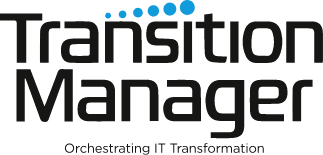In today's world, the ever growing and ever-changing list of potential technologies and capabilities that are being made available to organisations is putting CIOs and decision makers in a situation that can best be described as: challenging.
A focus on maintaining growth while limiting ever increasing costs is leading companies to embed themselves in cloud and hybrid platform models, that provide them with ample opportunities to continue their technological evolution.
So how does one take an already existing environment and move it to a new platform? There are two options:
- Migration
- Transformation
Migration
For over a decade the lion's share of projects have been focused exclusively on migrations with everyone chasing to reach our favourite buzz words: The Cloud. Typically, these migrations projects would be what is termed as Lift-and-Shift, moving from the old to the new platform with as minimal changes as possible to the servers themselves.
Lift-and-Shift migration projects, while simpler in their nature, do pertain to certain advantages that make them an attractive option to organisations; speed and immediate cost saving being arguably the two standing out the most. Migration projects allow for a rapid method of reducing on-premises infrastructure costs with a comparatively low investment in the project teams hours.
While migrations have advantages, they also have their flaws; for optimal performance and cost savings in the cloud, applications need to be configured correctly to attain to all the benefits the cloud provides.
Transformation
Data centre transformation is a whole other tier of project, requiring a full understanding of how the organisation works and what the business needs are. These projects require a significant time investment to analyse a forward plan for fundamentally changing the way its IT is delivered across all the departments of the business.
Transformation projects will typically require migrations as part of its overarching development to allow the business to move it’s services to the end result of it’s transformation.
There are tools out there that can be used to enable a business to take on a transformation project, two examples of these tools are:
These two tools allow an organisation to map its dependencies between its infrastructure components, applications, and services. By mapping these dependencies, a business can visually see how all their components are linked and can now formulate a plan for moving their systems with minimal business impact.
What is the right strategy?
Unlike a Mens Health workout plan, we can’t just use a cookie cutter approach when it comes to a transformation journey. Every business is a unique case and at a different chapter within its story. This means it has its own requirements, goals, and ethos to consider when trying to facilitate transformation.
Two very general strategies that we can quickly review:
- New applications
- Existing applications
When delivering a new application that path will be crystal clear; design and architect the application to take full advantage of the new platform, an example of this is deploying an application to be cloud native. By deploying an application to be native to it’s new platform a business will be able to leverage optimal cost savings and service resiliency.
As previously mentioned, an existing application that is migrated to a new platform like-for-like will not necessarily gain the advantages and benefits that a platform native application will be leveraging. These applications will need to be analysed to establish the best route forward.
From experience, large organisations will often need to take a phase approach to migrations and transformation. These businesses will have dependencies on core legacy services and applications that are critical to a business’s offerings. By using a phased approach organisations can leverage a transformational journey with a focus on legerity and risk reduction.
How to choose the right partner for your cloud transformation project.
Some businesses have a clear plan and know where they require assistance in achieving their cloud goals. Whereas others are in the earlier stages in their transformation journey and need support in defining the right strategy to get them into the cloud. Selecting a partner that has real-world experience is critical in ensuring the transition along this bumpy path can be tailored to be as smooth and risk free as possible for your business. The path can be laid out in a well thought out and practiced plan.
Whilst you are exploring the best partner to take you through your journey you will soon discover that most migration teams will say they have a new approach to the methodology. The truth is, all migration projects require the three main phases,
- Discovery - This is where the team, sometimes aided by software, will have the goal of understanding what needs to be included in the transformation and therefore migrated.
- Analysis & Planning - Mapping out the applications and infrastructure, where the dependencies associated with each application and piece of hardware are established.
- Execution - This is it, where the previous stages have all been leading - The actual move. The execution will be performed within an approved change window to minimize the impact on day-to-day business. This action is most performed at the weekend or overnight, whether that be to rehost, refactor or re-engineer.
So, with so many companies out there, the question is, "why Towers Associates, what do they do differently"?
Why Towers Associates?
Our team of change makers are all recognized specialists within their field and a blend of enterprise IT insiders. We know how to make your change happen and are proud to provide a suite of hands-on experts with deep knowledge of modern tools and techniques, who can offer agile services to guide your organisation through your transformation journey.
From the first steps of your transformation project, we must be working flexibly from a single source of truth. We collaborate with partner organisations to define roadmaps early, impartially, realistically, and most importantly, securely. Ensuring transparency from step one. Our dedicated project lead will be with you on every aspect of the process.
Our migration, modernisation and transformation services are globally available, delivered by our best-in-class practitioners. Our unique approach to tooling enables us to thoroughly analyse all options to ensure we help organisation’s make a more informed decision on their transformation options.
With our experience, tooling, and methodology, we have been delivering for leading enterprise companies. Let us deliver it for you too.











